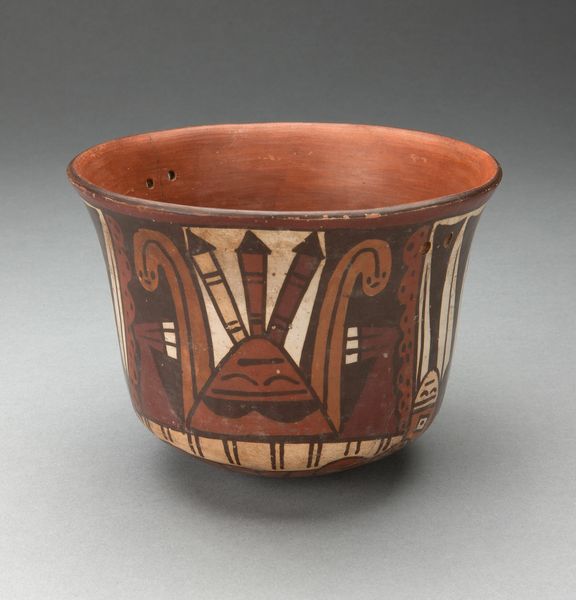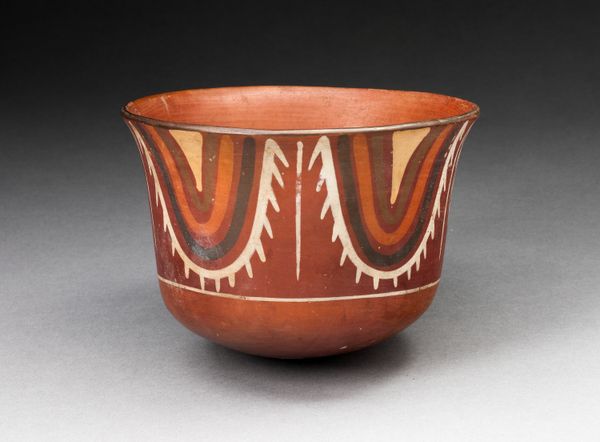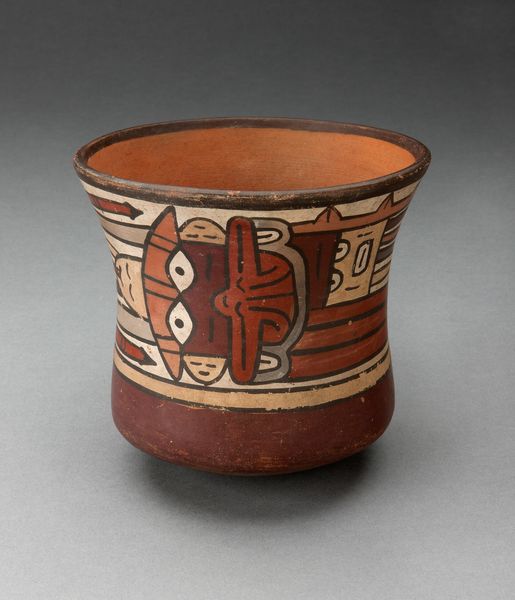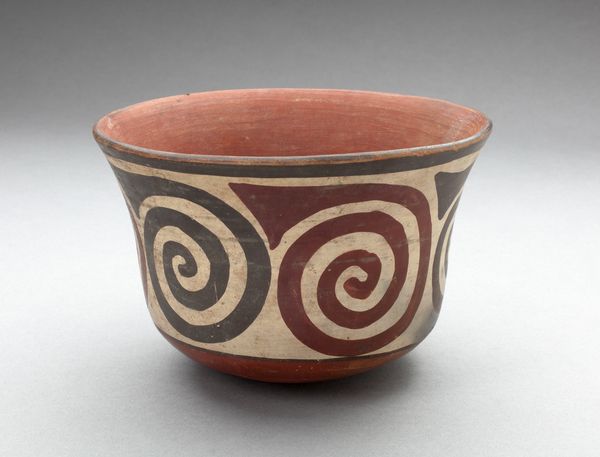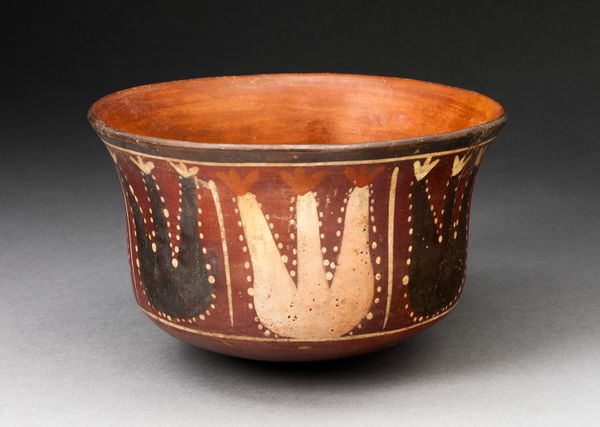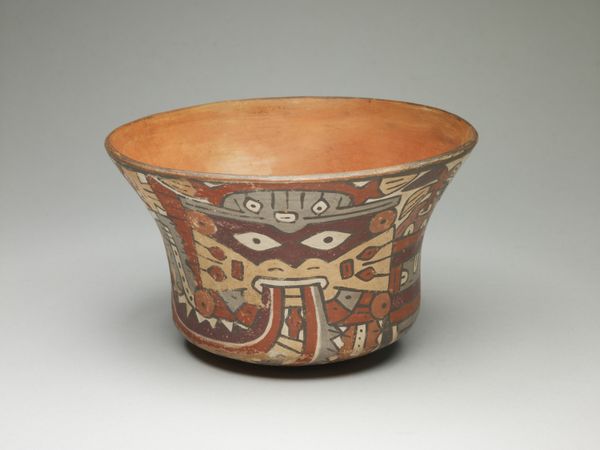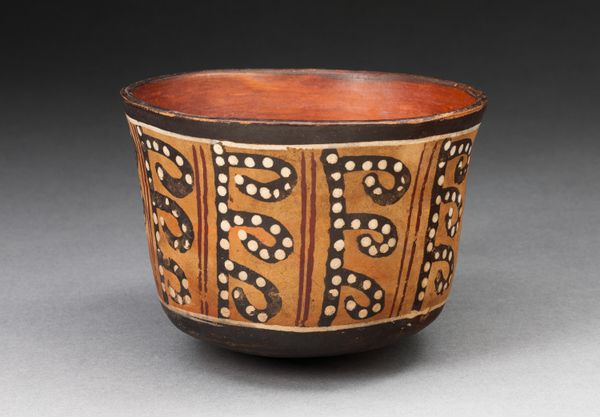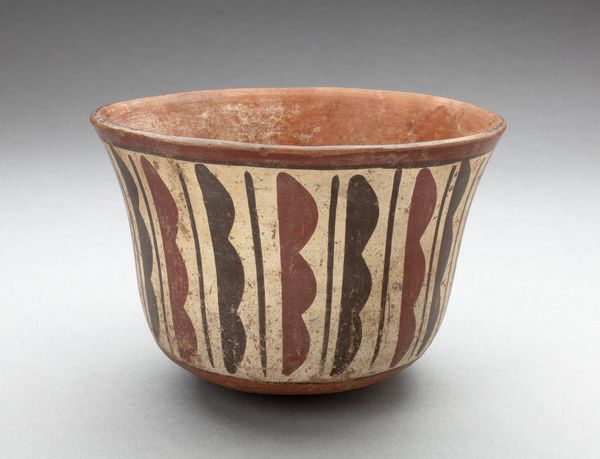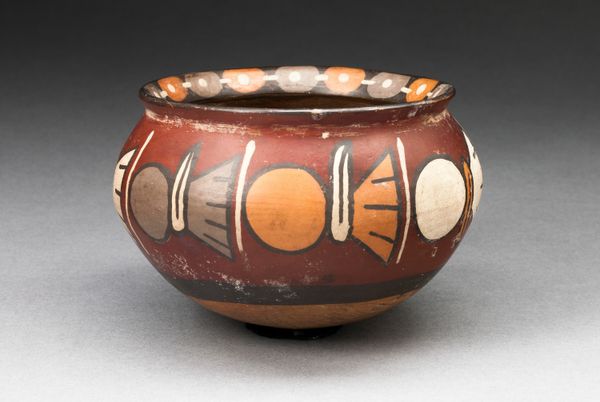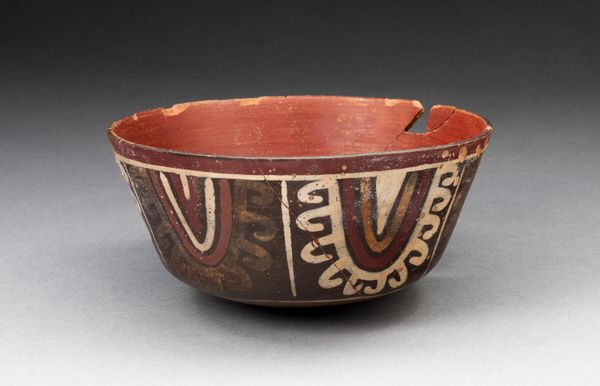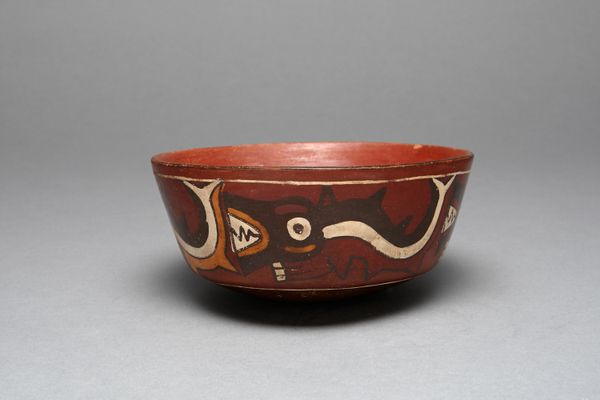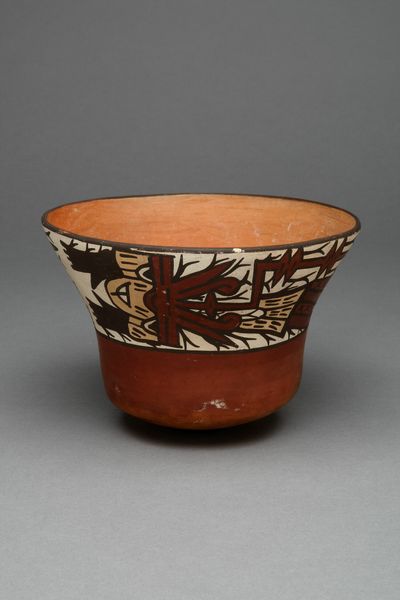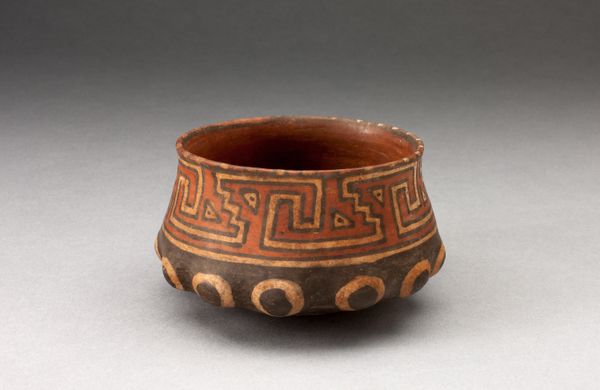
Bowl Depicting Interlocking, Undulating Abstract Serpents c. 180 - 500
0:00
0:00
ceramic, terracotta
#
ceramic
#
figuration
#
geometric
#
ceramic
#
terracotta
#
indigenous-americas
Dimensions: 11.4 × 15.7 cm (4 1/2 × 6 3/16 in.)
Copyright: Public Domain
Editor: So this is an ancient ceramic bowl from the Nazca culture, dating from around 180 to 500 AD, titled "Bowl Depicting Interlocking, Undulating Abstract Serpents." The serpent motif feels really powerful and almost dizzying. What significance might these serpents have had in the Nazca society and what was the role of art within their culture? Curator: That’s a fantastic question. When looking at art from ancient societies, especially one like the Nazca culture where we have limited written records, we must consider the object’s original context within ritual practices and belief systems. What does the serpent symbolize to you? Editor: Immediately I think of power, maybe the unpredictable force of nature. Something primal. Curator: Precisely. Serpents, in many ancient cultures including the Nazca, are associated with fertility, water, and the earth's vital energies. Given that the Nazca civilization flourished in a desert environment in what is now Peru, control over water was essential for agriculture and survival. It’s plausible this bowl, perhaps used in ceremonial contexts, was meant to invoke and honor these life-giving forces. Editor: So it's not just decoration but also potentially an active agent within these rituals? Curator: Absolutely. This bowl would not have been merely a beautiful object; it likely played a role in communicating with the spiritual world, mediating the relationship between the community and the forces that shaped their existence. The geometric patterns add to the feeling, almost like the world has more behind the eye can see. Does understanding the social function impact your sense of its aesthetic qualities? Editor: It does. Knowing it served a practical function adds layers of meaning to the abstract design, reinforcing the connection between art and life. Curator: Exactly. Understanding the historical and cultural contexts can give us a richer experience, transforming the way we view a piece and perceive its cultural value.
Comments
No comments
Be the first to comment and join the conversation on the ultimate creative platform.
